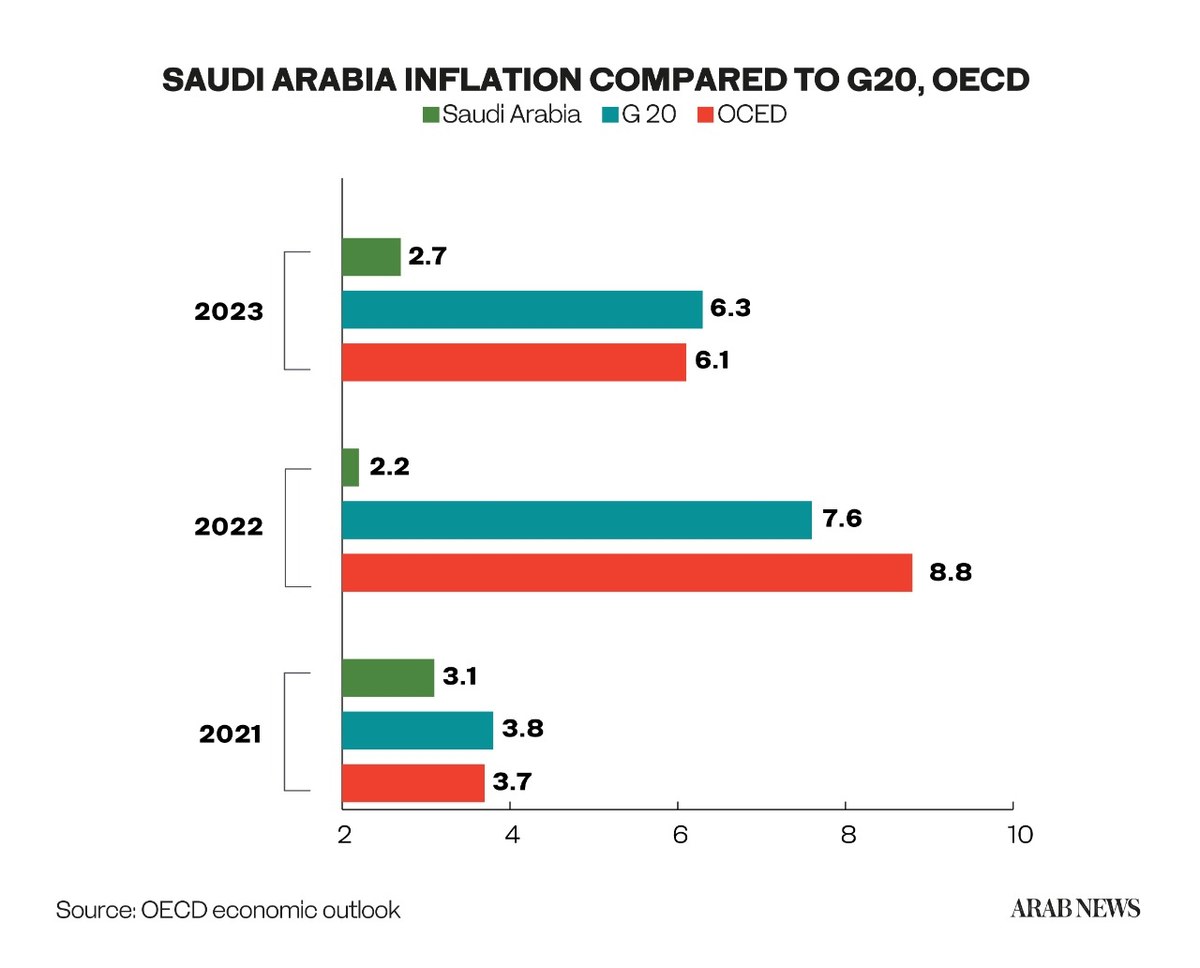RIYADH: While the world's economies are suffering from a spike in global food and commodity prices, Saudi Arabia is expected to enjoy lower levels of inflation, according to a forecast from the Organization of Economic Cooperation and Development
Saudi Arabia’s gross domestic product is expected to grow by more than double the rate of other G20 economies, the OECD said.
The Saudi economy will grow by 7.8 percent in 2022, while G20 economies are expected to grow by 2.9 percent, reported OECD in its recent economic outlook.
The OECD also revised up the Saudi GDP growth in 2023 to 9.0 percent, tripling the G20 average growth, while the Kingdom’s inflation rate will remain below the G20 average of 6.3 percent.
Saudi Arabia, Argentina, and Turkey are among the few rare cases showing positive GDP growth since the Ukraine war started.
Meanwhile, the OECD China and India — simultaneously with the rest of the G20 economies — are anticipated to see a fall in real GDP rates of 4.4 and 6.9 percent in 2022, respectively.
India’s economy is predicted to recover by 2023; however, the same cannot be said for China and the rest of the G20 economies.

Inflation on the rise but not in Saudi Arabia
Moving on to inflation, countries neighboring Russia and Ukraine have been hit the hardest — Lithuania, Estonia, and Latvia have endured inflation rates of 14, 12, and 10 percent, respectively.
Likewise, except for Japan, all OECD countries are recording higher levels of inflation relative to the previous year.
Within the G20 economies, Saudi Arabia is expected to be outperforming its peers as the only country showing a decrease in inflation rate year-on-year, from 3.1 percent in 2021 to 2.2 percent in 2022.
Although the Kingdom’s inflation rate is expected to increase to 2.7 percent in 2023 — a 0.5 percentage point increase from 2022 — it will achieve the lowest inflation levels among the G20 economies and the third lowest worldwide, following Japan and Switzerland.
As Saudi Arabia has a lower dependency on wheat exports from Ukraine and Russia than other countries in the region and a robust local crude oil production, the Saudi Arabian economy is in a good position next year.
Low-income economies in the Arab region-such as Sudan, Lebanon, and Egypt, which rely on 90 percent of their wheat exports from Russia and Ukraine – are likely to experience negative real GDP growth because of supply disruptions.












